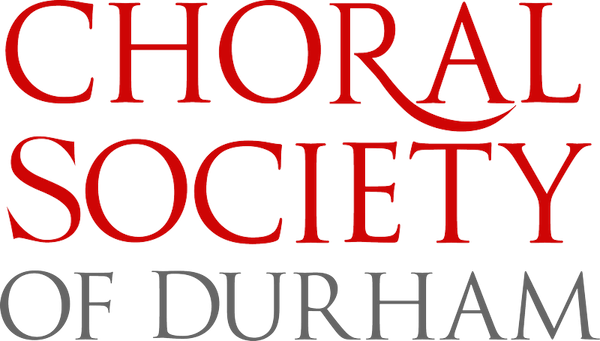William Adams, DMA
There is something utterly exhilarating about theater on a thrust stage or in the round for both the performer and the audience. With the forced separation of the proscenium stage gone, the performance becomes personal, even intimate. Operas and musicals are virtually impossible to present fully in the round because of the need for an orchestra. However, a thrust stage, or 3/4 thrust, where the audience is on three sides of the stage, provides a place for the orchestra while bringing the actors and audience together. Most shows presented this way will have small casts and will lend themselves to more fourth wall breaks. Shows with a chorus are often too large and unwieldy for this more intimate environment. One could also argue that opera does not lend itself to this kind of setting because of the size of the voices and the even larger than larger-than-life nature of operatic performances. All of this made Piedmont Opera’s production of Pagliacci, presented at the Millennium Event Center in Winston-Salem, so fascinating.
Not all productions presented in thrust require fourth wall breaks, of course, but Pagliacci begins with Tonio’s famous prologue where he directly engages the audience. Once that has been established, it is imperative upon the performer to clearly define when they are allowing themselves to be aware of the audience and when they must be focused on the action on the stage. Few productions assume the fourth wall is broken all the time and some only allow certain characters to break the fourth wall. Staging director Kathleen Stakenas, chose to take the chance and virtually eliminate the fourth wall entirely. After Tonio’s prologue, the performers entered through the audience from multiple avenues and immediately established that the audience was, itself, part of the production. By far the best realization of these fourth wall breaks, and the inclusion of the audience, came with putting the chorus in the audience for the second act. Some of the singers interacted with the audience members they were seated next to. Hearing the chorus sing from their seats also brought the music literally into the laps of the audience. While mentioning the chorus, it must also be pointed out that they sang beautifully with a rich and full sound crafted by chorus master, Kelly Turner. Somehow, in something of a musical miracle, there were only very slight moments of sync issues with the orchestra; remarkable in that they could not see the conductor.
Joseph Mechavich led members of the Winston-Salem Symphony in the rather herculean task of supporting an opera when the conductor could not make eye contact with any of the singers. It was musically very clean and tight with only minor exceptions with the full chorus. The orchestra was rich and well balanced and played very sensitively, especially considering certain acoustical handicaps inherent in the venue.
The Millennium Center both helped and hindered as the night went on. The acoustics in opera houses are meant to help the voices. While there is, of course, no direct amplification, the halls are usually designed in such a way that the singers’ voices are somewhat enhanced and are able to easily project into a deep space. The lack of such acoustics in the Millennium Center impacted the singers both positively and negatively. On one hand, smaller voices could get lost a bit if they were facing away from a portion of the audience. On the other hand, the voices seemed more real, more accessible to the audience than they might have in a larger acoustic. This certainly enhanced the intimacy factor. Most theaters using a thrust stage have raked, auditorium style seating where the back rows are elevated. With all audience members on the same level, some of the action closer to the floor of the stage was lost visually. A slightly more elevated stage might have solved or at least diminished that problem. The four large brick pillars in the hall also made seeing the supertitle system (on two large screens on either side of the orchestra) difficult if not impossible for a large portion of the audience. To counter this, Piedmont Opera sent all ticket holders a detailed synopsis of the opera in advance and implored them to read up on the story so they could focus on the action, rather than the screens.
The cast was exceptional.
Benjamin Werley presented a Canio that was visceral and intensely physical. Where others have chosen to wallow in Canio’s jealousy, Mr. Werley raged. He sang with a bright, crystalline tenor that dripped with emotion.
It has been widely discussed that one of the secrets to great acting is listening. Being present in the scene at all times and truly listening and reacting does more to establish a character than the actual delivery of lines. Cadie J. Bryan delivered a masterclass in dramatic presence. Sopranos undertaking the role of Nedda are tasked with navigating a multitude of intense moments and powerful emotions. She must be demeaning to Tonio and then disgusted and violently aggressive. She must be fearful of Canio but also draw upon her passions to withstand his jealousy as she refuses to name her lover. She must also burn with her passion for Silvio. Ms. Bryan’s portrayal was fluid and nuanced. She took full advantage of the more intimate staging environment with subtle facial expressions. Her voice is equally nuanced. She brought a steely edge to her derision of Tonio and a rich, lush depth to her love for Silvio.
Joshua Jeremiah created a delightfully crude and rude Tonio from his oafish physicality to his widely varied vocal colors. He sang the prologue with its now standard high note interpolations at the end with ease, but also with great power. Mr. Jeremiah’s baritone is rich and intensely expressive.
Logan Webber sang Beppe with a beautifully rich and lyrical tenor that sounded as though it might be equally comfortable in lyric baritone roles either in opera or musical theater. He rewarded the audience with an ebullient stage presence and a natural sense of comedic timing.
As Nedda’s lover, Silvio is not given much time to impress. Baritones who sing this role must be able to establish themselves quickly and decisively so that we don’t have to just accept Nedda’s passion for him as a theatrical device. Perhaps drawing on his upbringing in Dallas, Texas, Jonathan Bryan sauntered onto the stage with a bowlegged charm that, when coupled with his rakishly good looks, made it easy to understand Nedda’s obsession. Mr. Bryan’s voice is lyrical and warm and he sang Silvio with grace but also with just the right amount of swagger.
It should be noted that it is, perhaps, slightly unfair to cast Mr. and Mrs. Bryan together in productions where they must have a romantic relationship. Not only was their chemistry immediately apparent, but their on-stage intimacy radiated. It did, in all seriousness, create a wonderful authenticity for Nedda and Silvio and, married or not in real life, would not have been possible without the consummate skill and professionalism of both actors.
This production and its inventiveness were born out of necessity with Piedmont Opera’s normal base of operations undergoing renovation. Pagliacci was an excellent choice to stage this way but there are other operas that would also lend themselves well to this kind of treatment. Given the immense success of this production and the experience had by the audience, it is hoped this will not be the last time we have the opportunity to experience opera in such an intimate setting.









